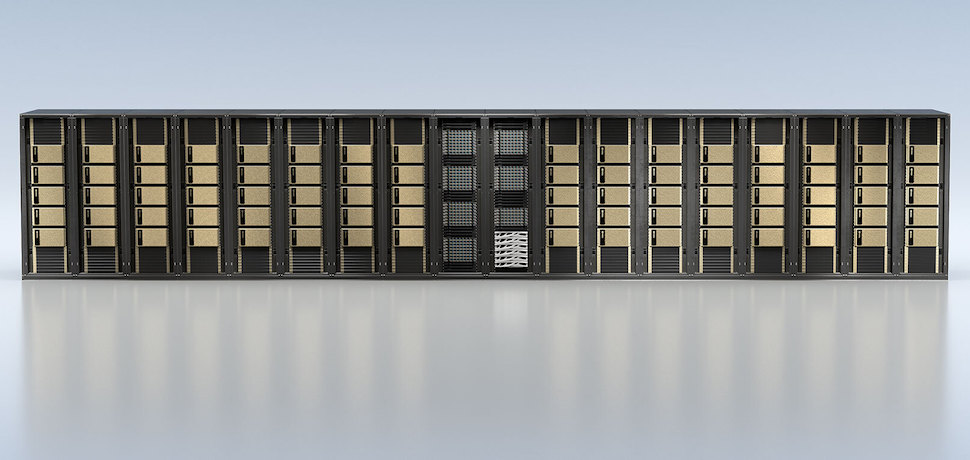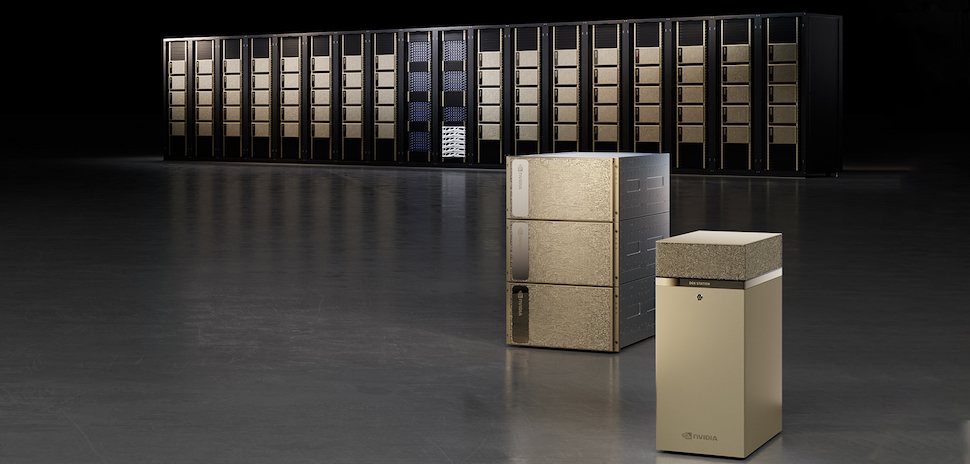Dallas’ Southern Methodist University has a thing for fast computers. It acquired its first high-speed computing cluster from NVIDIA a decade ago, enabling its researchers to analyze data from CERN. That led to SMU’s role in identifying the probability of the Higgs boson—the so-called “God Particle.”
Now SMU’s research is getting even more superpowerful.
DGX SuperPOD delivers ‘world-leading AI supercomputing’
SMU is investing $11.5 million in hardware, software, and training to crank up the school’s AI infrastructure with an NVIDIA DGX SuperPOD—bringing “world-leading AI supercomputing capabilities” to Dallas.
The investment will give SMU 10 times the power of its current supercomputer memory capabilities, enabling AI and machine learning that’s 25 times faster than current levels.
SMU will incorporate the SuperPOD with the NVIDIA Quantum InfiniBand networking platform into its data center to produce a theoretical 100 petaflops of computing power—enabling SMU research teams to perform “a blistering 100 quadrillion operations per second.”
The collaboration will give SMU faculty, students, and research partners the ability to integrate sophisticated AI tech across a wide array of research—from computational biology to human performance, national defense, and digital humanities.
“This partnership will put us in the fast lane for artificial intelligence,” SMU President R. Gerald Turner said in a statement. “Research universities like ours have an obligation to actively engage in the development and application of AI for societal good, and this partnership gives us the tools to do it.”

NVIDIA DGX SuperPOD [Photo: NVIDIA]
National security, nuclear test monitoring, earthquake analysis and more
“This will be of great value to our faculty and students who are already using accelerated computing in areas such as drug discovery, computational chemistry, virtualization, astrophysics and engineering,” Elizabeth Loboa, SMU provost and VP for Academic Affairs.Loboa said in the statement.
SMU’s leap in computing capability will be pivotal in many ways, Loboa says, as the university increases its AI-focused research to address “significant national and international issues.”
SMU is now recruiting new faculty across multiple disciplines to join existing faculty research groups to tackle national security issues and remote sensing of hazards—including nuclear test monitoring, earthquake analysis, and building and infrastructure vulnerability.
The research groups will also study 21st-century education technology, including optimizing student learning outcomes.

NVIDIA DGX SuperPOD [Image: NVIDIA]
Dallas mayor: Increase in supercomputing can be ‘a powerful tool for our city’
The huge boost in SMU’s computing capability could provide strong benefits for North Texas, which continues to grow as a technology hub.
“Dallas has long been a hub for innovation, and this tremendous increase in supercomputing brainpower at SMU can be a powerful tool for our city,” Dallas Mayor Eric Johnson said in the statement. “Through research collaborations built on SMU’s capabilities in artificial intelligence, we have the potential to boost our city’s booming economy, improve our workforce, and learn to solve major challenges that we face.”
As the Brookings Institution found in its Geography of AI report, AI activity is highly concentrated in the San Francisco Bay Area and 13 “early adopter” metro areas, Dallas-Fort Worth has been identified as a “potential AI adoption center.”
“High-performance computing is transforming the world by enabling researchers to tackle some of humanity’s most complex problems,” said Cheryl Martin, director of higher education and research at NVIDIA, in the statement. “NVIDIA’s collaboration with world-class institutions such as SMU is equipping the next generation of scientists with the extreme performance to supercharge AI and supercomputing exploration and expand humanity’s understanding of the universe.”
Move will support SMU’s bid for top R1 research status
The boost in SMU’s high-performance computing power will bolster its commitment to reach top R1 research status as designated by the Carnegie Classification of Institutions of Higher Education. SMU currently holds Carnegie classification R2 status, leaping past 55 other universities since 2005.
![]()
Get on the list.
Dallas Innovates, every day.
Sign up to keep your eye on what’s new and next in Dallas-Fort Worth, every day.
































